Premium Only Content
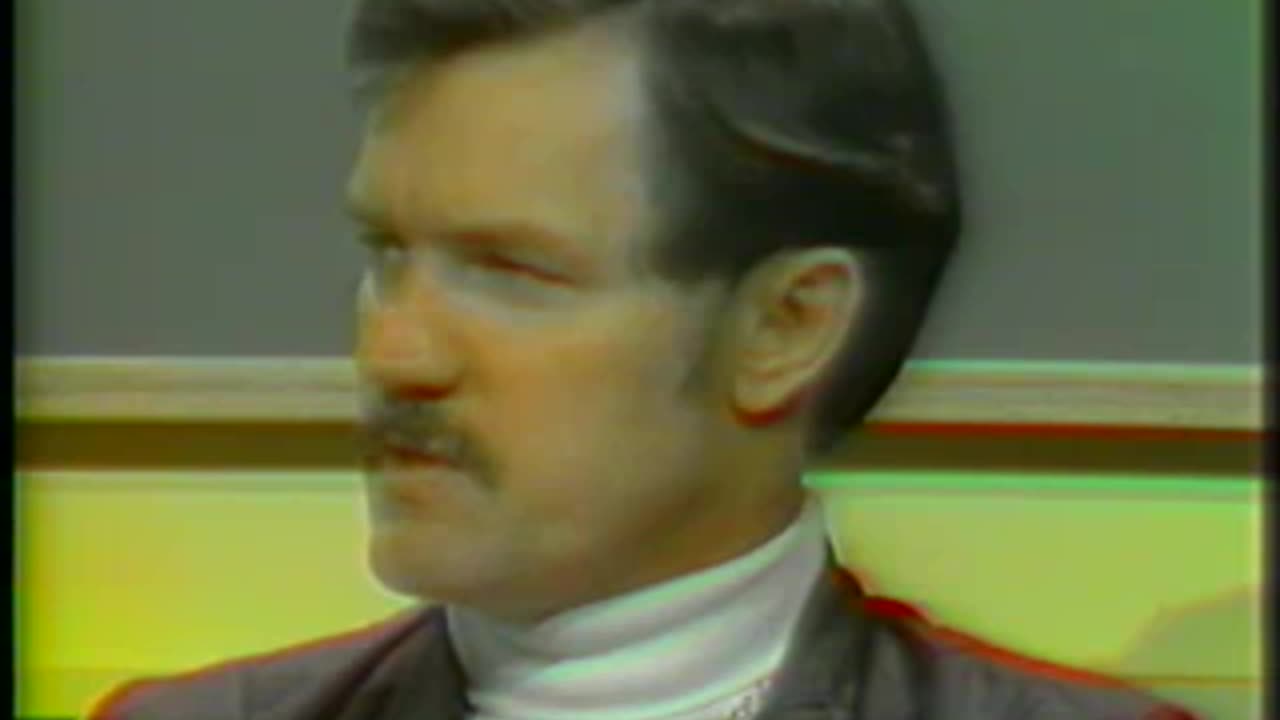
Former CIA Officer John Stockwell Reveals Shocking CIA Stories (1986)
More CIA stories from John Stockwell: https://thememoryhole.substack.com/
In this thought-provoking video, former CIA case officer John Stockwell sheds light on recent developments within the CIA. He delves into the implications of a congressional bill and an executive order that have lifted previous limitations on intelligence services. Particularly concerning is the introduction of legislation that criminalizes the disclosure of their operations and personnel.
Stockwell emphasizes how these measures mark a significant shift, creating what could be the country's inaugural official secrets act. Through his insights, viewers gain a deeper understanding of the potential impact on transparency, accountability, and the freedom to reveal information about the activities of intelligence agencies. The discussion raises critical questions about the balance between national security and the public's right to information.
The 1977 Seychelles coup d'état was a virtually bloodless coup that occurred in the East African and Indian Ocean country of Seychelles on 4–5 June 1977. Between 60[1]–200[2] supporters of the Seychelles People's United Party (SPUP), who had been training in Tanzania, overthrew President Sir James Mancham of the Seychelles Democratic Party (SDP) whilst he was attending the Commonwealth Heads of Government Meeting in London, the United Kingdom.
The insurgents took control of strategic points on the main island of Mahé, where the capital Victoria is located. The central police station was seized "virtually without a shot being fired." In contrast, there was an exchange of fire at the Mont Fleuri police station, where the arsenal was kept. A policeman and one of the insurgents were killed in the fighting.[2]
The plotters arrested six British Armed Forces officers, who had been advising the Seychelles Police Force since 1976, when Seychelles gained independence from the United Kingdom. The officers and their families, as well as the Chief Justice of the Supreme Court, Aiden O'Brien Quinn, a judge from Ireland similarly on loan by his Government, were flown to Europe.[2]
The leader of the SPUP and Prime Minister France-Albert René, who denied knowing of the plan, was then sworn in as President and formed a new government.[1][2]
When approached by the insurgents, René was said to have accepted the Presidency on three conditions: that the safety of political individuals be guaranteed, that international agreements remain in force (including the one allowing the United States to maintain an AFSCF space tracking station in Mahé), and that elections be planned for 1978[2] (they were eventually held in 1979).[3]
A Proclamation by the coup leaders on June 13, 1977, suspended the Constitution and gave the power to make laws by decree to René. Another Proclamation on June 28, 1977, revoked the Constitution and replaced it with one that eliminated the parliament and transferred all legislative powers to the President. This extra-constitutional regime formulated another Constitution in 1979.[4]
René was the only presidential candidate for elections in 1979, in 1984, and in 1989, which he won with over 90% of the vote.[5]
Muammar Muhammad Abu Minyar al-Gaddafi[pron 1] (c. 7 June 1942 – 20 October 2011) was a Libyan revolutionary, politician and political theorist who ruled Libya from 1969 until his killing in 2011 by rebel forces.[13][14] He first served as Revolutionary Chairman of the Libyan Arab Republic from 1969 to 1977 and then as the Brotherly Leader of the Great Socialist People's Libyan Arab Jamahiriya from 1977 to 2011. Initially ideologically committed to Arab nationalism and Arab socialism, Gaddafi later ruled according to his own Third International Theory.
Born near Sirte, Italian Libya, to a poor Bedouin Arab family, Gaddafi became an Arab nationalist while at school in Sabha, later enrolling in the Royal Military Academy, Benghazi. Within the military, he founded a revolutionary group which deposed the Western-backed Senussi monarchy of Idris in a 1969 coup. Having taken power, Gaddafi converted Libya into a republic governed by his Revolutionary Command Council. Ruling by decree, he deported Libya's Italian population and ejected its Western military bases. Strengthening ties to Arab nationalist governments—particularly Gamal Abdel Nasser's Egypt—he unsuccessfully advocated pan-Arab political union. An Islamic modernist, he introduced sharia as the basis for the legal system and promoted Islamic socialism. He nationalized the oil industry and used the increasing state revenues to bolster the military, fund foreign revolutionaries, and implement social programs emphasizing housebuilding, healthcare and education projects. In 1973, he initiated a "Popular Revolution" with the formation of Basic People's Congresses, presented as a system of direct democracy, but retained personal control over major decisions. He outlined his Third International Theory that year in The Green Book.
In 1977 Gaddafi transformed Libya into a new socialist state called a Jamahiriya ("state of the masses"). He officially adopted a symbolic role in governance but remained head of both the military and the Revolutionary Committees responsible for policing and suppressing dissent. During the 1970s and 1980s, Libya's unsuccessful border conflicts with Egypt and Chad, support for foreign militants, and alleged responsibility for bombings of Pan Am Flight 103 and UTA Flight 772 left it increasingly isolated on the world stage. A particularly hostile relationship developed with Israel, the United States and the United Kingdom, resulting in the 1986 U.S. bombing of Libya and United Nations–imposed economic sanctions. From 1999, Gaddafi shunned pan-Arabism, and encouraged pan-Africanism and rapprochement with Western nations; he was Chairperson of the African Union from 2009 to 2010. Amid the 2011 Arab Spring, protests against widespread corruption and unemployment broke out in eastern Libya. The situation descended into civil war, in which NATO intervened militarily on the side of the anti-Gaddafist National Transitional Council (NTC). Gaddafi's government was overthrown; he retreated to Sirte only to be captured and killed by NTC militants.
A highly divisive figure, Gaddafi dominated Libya's politics for four decades and was the subject of a pervasive cult of personality. He was decorated with various awards and praised for his anti-imperialist stance, support for Arab—and then African—unity, as well as for significant development to the country following the discovery of oil reserves. Conversely, many Libyans strongly opposed Gaddafi's social and economic reforms; he was posthumously accused of various human rights violations. He was condemned by many as a dictator whose authoritarian administration systematically violated human rights and financed global terrorism in the region and abroad.
Muammar Mohammed Abu Minyar al-Gaddafi[15] was born near Qasr Abu Hadi, a rural area outside the town of Sirte in the deserts of Tripolitania, Italian western Libya.[16] Gaddafi was the only son of his parents and the youngest of four siblings. His family came from a small, relatively uninfluential tribe called the Qadhadhfa,[17] who were Arab in heritage. His mother was named Aisha bin Niran (died 1978), and his father, Mohammad Abdul Salam bin Hamed bin Mohammad, was known as Abu Meniar (died 1985); the latter earned a meager subsistence as a goat and camel herder.[18]
Like other contemporary nomadic Bedouin tribes, the family were illiterate and did not keep any birth records.[19] Many biographers have used 7 June; however, his birthday is not known with certainty and sources have set it in 1942 or the spring of 1943,[19] although his biographers David Blundy and Andrew Lycett noted that it could have been pre-1940.[20] His parents' only surviving son, he had three older sisters.[19] Gaddafi's upbringing in Bedouin culture influenced his personal tastes for the rest of his life; he preferred the desert over the city and would retreat there to meditate.[21]
From childhood, Gaddafi was aware of the involvement of European colonial powers in Libya; his nation was occupied by Italy, and during the North African Campaign of the Second World War it witnessed conflict between Italian and British forces.[22] According to later claims, Gaddafi's paternal grandfather, Abdessalam Bouminyar, was killed by the Italian Army during the Italian invasion of 1911.[23] At the end of the Second World War in 1945, Libya was occupied by British and French forces. Britain and France considered dividing the nation between their empires, but the General Assembly of the United Nations (UN) decided that the country was to be granted political independence,[24] and in 1951 created the United Kingdom of Libya, a federal state under the leadership of a pro-Western monarch, Idris, who banned political parties and centralized power in his own hands.[24]
Education and political activism: 1950–1963
Gaddafi's earliest education was of a religious nature, imparted by a local Islamic teacher.[25] Subsequently, moving to nearby Sirte to attend elementary school, he progressed through six grades in four years.[26] Education in Libya was not free, but his father thought it would greatly benefit his son despite the financial strain. During the week Gaddafi slept in a mosque, and only at weekends and holidays walked 20 miles (32 km) to visit his parents. Even though Gaddafi's father was not educated, he made great sacrifices to send his son to school.[27] As an impoverished bedouin, he faced bullying and discrimination from his city-dwelling classmates. However, he had many Egyptian teachers who informed him of the dramatic events occurring in their homeland.[26] From Sirte, he and his family moved to the market town of Sabha in Fezzan, south-central Libya, where his father worked as a caretaker for a tribal leader while Muammar attended secondary school, something neither parent had done.[28] Gaddafi was popular at this school; some friends made there received significant jobs in his later administration, most notably his best friend, Abdul Salam Jalloud.[29]
Egyptian President Nasser was Gaddafi's political hero.
Many teachers at Sabha were Egyptian, and for the first time, Gaddafi had access to pan-Arab newspapers and radio broadcasts, especially the Cairo-based Voice of the Arabs.[30] Growing up, Gaddafi witnessed significant events rock the Arab world, including the 1948 Arab–Israeli War, the Egyptian Revolution of 1952, the Suez Crisis of 1956, and the short-lived existence of the United Arab Republic (UAR) between 1958 and 1961.[31] Gaddafi admired the political changes implemented in the Arab Republic of Egypt under his hero, President Gamal Abdel Nasser. Nasser argued for Arab nationalism; the rejection of Western colonialism, neo-colonialism, and Zionism; and a transition from capitalism to socialism.[32] Gaddafi was influenced by Nasser's book, Philosophy of the Revolution, which outlined how to initiate a coup.[33] One of Gaddafi's Egyptian teachers, Mahmoud Efay, was reportedly sympathetic towards the youth's political ideas, and advised him that a successful revolution would need the support of the army.[34]
Gaddafi organized demonstrations and distributed posters criticizing the monarchy.[35] In October 1961, he led a demonstration protesting against Syria's secession from the UAR and raised funds to send cables of support to Nasser. Twenty students were arrested as a result of the disorder. Gaddafi and his companions also broke windows in a local hotel that was accused of serving alcohol. To punish Gaddafi, the authorities expelled him and his family from Sabha.[36] Gaddafi moved to Misrata, there attending Misrata Secondary School.[37] Maintaining his interest in Arab nationalist activism, he refused to join any of the banned political parties active in the city—including the Arab Nationalist Movement, the Arab Socialist Ba'ath Party, and the Muslim Brotherhood—claiming that he rejected factionalism.[38] He read voraciously on the subjects of Nasser and the French Revolution of 1789, as well as the works of the Syrian political theorist Michel Aflaq and biographies of Abraham Lincoln, Sun Yat-sen, and Mustafa Kemal Atatürk.[38]
Military training: 1963–1966
Gaddafi briefly studied history at the University of Libya in Benghazi before dropping out to join the military.[39] Despite his police record, in 1963 he began training at the Royal Military Academy, Benghazi, alongside several like-minded friends from Misrata. The armed forces offered the only opportunity for upward social mobility for underprivileged Libyans, and Gaddafi recognized it as a potential instrument of political change.[40] Under Idris, Libya's armed forces were trained by the British military; this angered Gaddafi, who viewed the British as imperialists, and accordingly, he refused to learn English and was rude to the British officers, ultimately failing his exams.[41] British trainers reported him for insubordination and abusive behaviour, stating their suspicion that he was involved in the assassination of the military academy's commander in 1963. Such reports were ignored, and Gaddafi quickly progressed through the course.[contradictory][42]
With a group of loyal cadres, in 1964 Gaddafi established the Central Committee of the Free Officers Movement, a revolutionary group named after Nasser's Egyptian predecessor. Led by Gaddafi, they met secretively and were organized into a clandestine cell system, pooling their salaries into a single fund.[43] Gaddafi travelled around Libya collecting intelligence and developing connections with sympathizers, but the government's intelligence services ignored him, considering him little threat.[44] Graduating in August 1965,[45] Gaddafi became a communications officer in the army's signal corps.[46]
In April 1966, he was assigned to the United Kingdom for further training; over nine months he underwent an English-language course at Beaconsfield, Buckinghamshire, an Army Air Corps signal instructors course in Bovington Camp, Dorset, and an infantry signal instructors course at Hythe, Kent.[47] Despite later rumours to the contrary, he did not attend the Royal Military Academy Sandhurst.[44] The Bovington signal course's director reported that Gaddafi successfully overcame problems learning English, displaying a firm command of voice procedure. Noting that Gaddafi's favourite hobbies were reading and playing football, he thought him an "amusing officer, always cheerful, hard-working, and conscientious".[48] Gaddafi disliked England, claiming British Army officers had racially insulted him and finding it difficult adjusting to the country's culture; asserting his Arab identity in London, he walked around Piccadilly wearing traditional Libyan robes.[49] He later related that while he travelled to England believing it more advanced than Libya, he returned home "more confident and proud of our values, ideals and social character".[50]
Libyan Arab Republic
Further information: History of Libya under Muammar Gaddafi
Coup d'état: 1969
Main article: 1969 Libyan coup d'état
People of Libya! In response to your own will, fulfilling your most heartfelt wishes, answering your most incessant demands for change and regeneration, and your longing to strive towards these ends: listening to your incitement to rebel, your armed forces have undertaken the overthrow of the corrupt regime, the stench of which has sickened and horrified us all. At a single blow our gallant army has toppled these idols and has destroyed their images. By a single stroke it has lightened the long dark night in which the Turkish domination was followed first by Italian rule, then by this reactionary and decadent regime which was no more than a hotbed of extortion, faction, treachery and treason.
—Gaddafi's radio speech after seizing power, 1969[51]
Idris' government was increasingly unpopular by the latter 1960s; it had exacerbated Libya's traditional regional and tribal divisions by centralizing the country's federal system to take advantage of the country's oil wealth.[52] Corruption and entrenched systems of patronage were widespread throughout the oil industry.[53] Arab nationalism was increasingly popular, and protests flared up following Egypt's 1967 defeat in the Six-Day War with Israel; Idris' administration was seen as pro-Israeli due to its alliance with the Western powers.[54] Anti-Western riots broke out in Tripoli and Benghazi, while Libyan workers shut down oil terminals in solidarity with Egypt.[54] By 1969, the US Central Intelligence Agency (CIA) was expecting segments of Libya's armed forces to launch a coup. Although claims have been made that they knew of Gaddafi's Free Officers Movement, they have since claimed ignorance, stating that they were instead monitoring Abdul Aziz Shalhi's Black Boots revolutionary group.[55] Shalhi, who effectively served as Idris' chief of staff, and his brother Omar were the sons of Idris' former chief advisor Ibrahim Shalhi, who had been murdered by Queen Fatima's nephew in the fall of 1954.[56] After their father's assassination, they became the favorites of Idris.[57]
In mid-1969, Idris travelled abroad to spend the summer in Turkey and Greece amid widespread rumors of an abdication or a British-backed coup by the Shalhi brothers on 5 September.[58] Gaddafi's Free Officers, recognizing this as their last chance to preempt the Shelhis in overthrowing the monarchy, initiating "Operation Jerusalem".[59] If Gaddafi's Free Officers had not preempted the Shelhis, they would have almost certainly been defeated by the combined forces of Abdul Aziz Shelhi, the deputy commander of Libya's army, and the prominent families in Cyrenaica that supported the Shelhi family.[60] On 1 September, Gaddafi's Free Officers occupied airports, police depots, radio stations, and government offices in Tripoli and Benghazi. Gaddafi took control of the Berka barracks in Benghazi, while Umar Muhayshi occupied Tripoli barracks and Jalloud seized the city's anti-aircraft batteries. Khweldi Hameidi took over the Tripoli radio station and was sent to arrest crown prince Sayyid Hasan ar-Rida al-Mahdi as-Sanussi and force him to relinquish his claim to the throne.[61][62] They met no serious resistance and wielded little violence against the monarchists.[63]
Once Gaddafi removed the monarchical government, he announced the foundation of the Libyan Arab Republic.[64] Addressing the populace by radio, he proclaimed an end to the "reactionary and corrupt" regime, "the stench of which has sickened and horrified us all".[65] Due to the coup's bloodless nature, it was initially labelled the "White Revolution", although was later renamed the "One September Revolution" after the date on which it occurred.[66] Gaddafi insisted that the Free Officers' coup represented a revolution, marking the start of widespread change in the socio-economic and political nature of Libya.[67] He proclaimed that the revolution meant "freedom, socialism, and unity", and over the coming years implemented measures to achieve this.[68]
Consolidating leadership: 1969–1973
The 12-member central committee of the Free Officers proclaimed themselves the Revolutionary Command Council (RCC), the government of the new republic.[69] Lieutenant Gaddafi became RCC chairman, and therefore the de facto head of state, also appointing himself to the rank of colonel and becoming commander-in-chief of the armed forces.[70] Jalloud became Prime Minister,[71] while a civilian Council of Ministers headed by Sulaiman Maghribi was founded to implement RCC policy.[72] Libya's administrative capital was moved from al-Beida to Tripoli.[73]
The flag of republican Libya used by Gaddafi's government from 1969 to 1972
Although theoretically a collegial body operating through consensus building, Gaddafi dominated the RCC.[66] Some of the others attempted to constrain what they saw as his excesses.[74] Gaddafi remained the government's public face, with the identities of the other RCC members only being publicly revealed on 10 January 1970.[75] All young men from (typically rural) working and middle-class backgrounds, none had university degrees; in this way they were distinct from the wealthy, highly educated conservatives who previously governed the country.[76]
The coup completed, the RCC proceeded with their intentions of consolidating the revolutionary government and modernizing the country.[66] They purged monarchists and members of Idris' Senussi clan from Libya's political world and armed forces; Gaddafi believed this elite were opposed to the will of the Libyan people and had to be expunged.[77] People's Courts were founded to try various monarchist politicians and journalists, many of whom were imprisoned, although none executed. Idris was sentenced to execution in absentia.[78] Three months after Gaddafi came to power, the army minister and interior minister, both of whom were from the eastern Barqa region, tried to overthrow him in a failed coup.[79] In 1970, Idris' great nephew Ahmed al-Senussi tried to instigate another coup against Gaddafi; the monarchist plot was foiled in August and Ahmed was sentenced to death (commuted in 1988 and pardoned by Gaddafi in 2001).[80][81]
In May 1970, the Revolutionary Intellectuals Seminar was held to bring intellectuals in line with the revolution,[82] while that year's Legislative Review and Amendment united secular and religious law codes, introducing sharia into the legal system.[83] Ruling by decree, the RCC maintained the monarchy's ban on political parties, in May 1970 banned trade unions, and in 1972 outlawed workers' strikes and suspended newspapers.[84] In September 1971, Gaddafi resigned, claiming to be dissatisfied with the pace of reform, but returned to his position within a month.[71] In July 1972, amid widespread speculation that Gaddafi had been ousted or jailed by his political opponents, a new 18-man cabinet was formed with only two of them, Jalloud and Abdel Moneim al-Houni, being military men; the rest were civilian technocrats per Gaddafi's insistence.[85][86] In February 1973, Gaddafi resigned again, once more returning the following month.[87]
Economic and social reform
Gaddafi at an Arab summit in Libya in 1969, shortly after the September Revolution that toppled King Idris I. Gaddafi sits in military uniform in the middle, surrounded by Egyptian President Gamal Abdel Nasser (left) and Syrian President Nureddin al-Atassi (right).
The RCC's early economic policy has been characterized as being state capitalist in orientation.[88] Many initiatives were established to aid entrepreneurs and develop a Libyan bourgeoisie.[89] Seeking to expand the cultivatable acreage in Libya, in September 1969 the government launched a "Green Revolution" to increase agricultural productivity so that Libya could rely less on imported food.[90] The hope was to make Libya self-sufficient in food production.[91] All land that had either been expropriated from Italian settlers or which was not in use was repossessed and redistributed.[92] Irrigation systems were established along the northern coastline and around various inland oases.[93] Production costs often surpassed the value of the produce and thus Libyan agricultural production remained in deficit, relying heavily on state subsidies.[94]
With crude oil as the country's primary export, Gaddafi sought to improve Libya's oil sector.[95] In October 1969, he proclaimed the current trade terms unfair, benefiting foreign corporations more than the Libyan state, and threatened to decrease production. In December Jalloud successfully increased the price of Libyan oil.[96] In 1970, other OPEC states followed suit, leading to a global increase in the price of crude oil.[95] The RCC followed with the Tripoli Agreement of 20 March 1971, in which they secured income tax, back-payments and better pricing from the oil corporations; these measures brought Libya an estimated $1 billion in additional revenues in its first year.[97]
Increasing state control over the oil sector, the RCC began a program of nationalization, starting with the expropriation of British Petroleum's share of the British Petroleum-N.B. Hunt Sahir Field in December 1971.[98] In September 1973, it was announced that all foreign oil producers active in Libya were to see 51 per cent of their operation nationalized, including the stake of Nelson Bunker Hunt, son of H.L. Hunt, who had played a key role in the discovery of oil in Libya.[99] Among the companies that were partially nationalized was Armand Hammer's Occidental Petroleum.[100][101] For Gaddafi, this was an essential step towards socialism.[102] It proved an economic success; while gross domestic product had been $3.8 billion in 1969, it had risen to $13.7 billion in 1974, and $24.5 billion in 1979.[103] In turn, the Libyans' standard of life greatly improved over the first decade of Gaddafi's administration, and by 1979 the average per-capita income was at $8,170, up from $40 in 1951; this was above the average of many industrialized countries like Italy and the UK.[103] In 1969, the government also declared that all foreign owned banks must either close down or convert to joint-stock operations.[104]
In 1971, Egypt's Anwar Sadat, Libya's Gaddafi and Syria's Hafez al-Assad signed an agreement to form a federal Union of Arab Republics. The agreement never materialized into a federal union between the three Arab states.
The RCC implemented measures for social reform, adopting sharia as a basis.[105] The consumption of alcohol was prohibited, night clubs and Christian churches were shut down, traditional Libyan dress was encouraged, and Arabic was decreed as the only language permitted in official communications and on road signs.[106] The RCC doubled the minimum wage, introduced statutory price controls, and implemented compulsory rent reductions of between 30 and 40 per cent.[107] Gaddafi also wanted to combat the strict social restrictions that had been imposed on women by the previous regime, establishing the Revolutionary Women's Formation to encourage reform.[108] In 1970, a law was introduced affirming equality of the sexes and insisting on wage parity.[109] In 1971, Gaddafi sponsored the creation of a Libyan General Women's Federation.[110] In 1972, a law was passed criminalizing the marriage of any females under the age of sixteen and ensuring that a woman's consent was a necessary prerequisite for a marriage.[109] Gaddafi's regime opened up a wide range of educational and employment opportunities for women, although these primarily benefited a minority in the urban middle-classes.[109]
From 1969 to 1973, it used oil money to fund social welfare programs, which led to housebuilding projects and improved healthcare and education.[111] House building became a major social priority, designed to eliminate homelessness and to replace the shanty towns created by Libya's growing urbanization.[107] The health sector was also expanded; by 1978, Libya had 50 per cent more hospitals than it had in 1968, while the number of doctors had increased from 700 to over 3000 in that decade.[112] Malaria was eradicated, and trachoma and tuberculosis greatly curtailed.[112] Compulsory education was expanded from 6 to 9 years, while adult literacy programs and free university education were introduced.[113] Beida University was founded, while Tripoli University and Benghazi University were expanded.[113] In doing so, the government helped to integrate the poorer strata of Libyan society into the education system.[114] Through these measures, the RCC greatly expanded the public sector, providing employment for thousands.[111] These early social programs proved popular within Libya.[115] This popularity was partly due to Gaddafi's personal charisma, youth and underdog status as a Bedouin, as well as his rhetoric emphasizing his role as the successor to the anti-Italian fighter Omar Mukhtar.[116]
To combat the country's strong regional and tribal divisions, the RCC promoted the idea of a unified pan-Libyan identity.[117] In doing so, they tried discrediting tribal leaders as agents of the old regime, and in August 1971 a Sabha military court tried many of them for counter-revolutionary activity.[117] Long-standing administrative boundaries were re-drawn, crossing tribal boundaries, while pro-revolutionary modernizers replaced traditional leaders, yet the communities they served often rejected them.[118] Realizing the failures of the modernizers, Gaddafi created the Arab Socialist Union (ASU) in June 1971, a mass mobilization vanguard party of which he was president.[119] The ASU recognized the RCC as its "Supreme Leading Authority", and was designed to further revolutionary enthusiasm throughout the country.[120] It remained heavily bureaucratic and failed to mobilize mass support in the way Gaddafi had envisioned.[121]
Foreign relations
Further information: Foreign relations of Libya under Muammar Gaddafi
Gaddafi (left) with Egyptian President Nasser in 1969. Nasser privately described Gaddafi as "a nice boy, but terribly naïve".[122]
The influence of Nasser's Arab nationalism over the RCC was immediately apparent.[123] The administration was instantly recognized by the neighbouring Arab nationalist regimes in Egypt, Syria, Iraq, and Sudan,[124] with Egypt sending experts to aid the inexperienced RCC.[125] Gaddafi propounded pan-Arab ideas, proclaiming the need for a single Arab state stretching across North Africa and the Middle East.[126] In December 1969, Libya signed the Tripoli Charter alongside Egypt and Sudan. This established the Arab Revolutionary Front, a pan-national union designed as a first step towards the eventual political unification of the three nations.[127] In 1970 Syria declared its intention to join.[128]
Nasser died unexpectedly in September 1970, with Gaddafi playing a prominent role at his funeral.[129] Nasser was succeeded by Anwar Sadat, who suggested that rather than creating a unified state, the Arab states should create a political federation, implemented in April 1971; in doing so, Egypt, Syria, and Sudan received large grants of Libyan oil money.[130] In July 1971, Gaddafi sided with Sadat against the Soviet Union in the 1971 Sudanese coup d'état and dispatched Libyan fighter jets to force down a British Airlines jetliner carrying the leading coup plotters, Farouk Osman Hamadallah and Babikir al-Nour. They were extradited back to Khartoum, where they were promptly executed by Sudanese leader Jaafar Nimeiry.[131] In February 1972, Gaddafi and Sadat signed an unofficial charter of merger, but it was never implemented because relations broke down the following year. Sadat became increasingly wary of Libya's radical direction, and the September 1973 deadline for implementing the Federation passed by with no action taken.[132]
After the 1969 coup, representatives of the Four Powers—France, the United Kingdom, the United States, and the Soviet Union—were called to meet RCC representatives.[133] The UK and the US quickly extended diplomatic recognition, hoping to secure the position of their military bases in Libya and fearing further instability. Hoping to ingratiate themselves with Gaddafi, in 1970 the US informed him of at least one planned counter-coup.[134] Such attempts to form a working relationship with the RCC failed; Gaddafi was determined to reassert national sovereignty and expunge what he described as foreign colonial and imperialist influences. His administration insisted that the US and the UK remove their military bases from Libya, with Gaddafi proclaiming that "the armed forces which rose to express the people's revolution [will not] tolerate living in their shacks while the bases of imperialism exist in Libyan territory." The British left in March and the Americans in June 1970.[135]
Moving to reduce Italian influence, in October 1970 all Italian-owned assets were expropriated, and the 12,000-strong Italian community was expelled from Libya alongside the smaller community of Libyan Jews. The day became a national holiday known as "Vengeance Day".[136] Italy complained that this was in contravention of the 1956 Italo-Libyan Treaty, although no UN sanctions were forthcoming.[137] Aiming to reduce NATO power in the Mediterranean, in 1971 Libya requested that Malta cease allowing NATO to use its land for a military base, in turn offering Malta foreign aid. Compromising, Malta's government continued allowing NATO to use the island, but only on the condition that NATO would not use it for launching attacks on Arab territory.[138] Over the coming decade, Gaddafi's government developed stronger political and economic links with Dom Mintoff's Maltese administration, and under Libya's urging Malta did not renew the UK's airbases on the island in 1980.[139] Orchestrating a military build-up, the RCC began purchasing weapons from France and the Soviet Union.[140] The commercial relationship with the latter led to an increasingly strained relationship with the US, which was then engaged in the Cold War with the Soviets.[141]
Duration: 10 minutes and 30 seconds.10:30
A 1973 anti-Gaddafist British newsreel including an interview with Gaddafi about his support for foreign militants
Gaddafi was especially critical of the US due to its support of Israel and sided with the Palestinians in the Israeli–Palestinian conflict, viewing the 1948 creation of the State of Israel as a Western colonial occupation forced upon the Arab world.[142] He believed that Palestinian violence against Israeli and Western targets was the justified response of an oppressed people who were fighting against the colonization of their homeland.[143] Calling on the Arab states to wage "continuous war" against Israel, in 1970 he initiated a Jihad Fund to finance anti-Israeli militants.[144] In June 1972 Gaddafi created the First Nasserite Volunteers Centre to train anti-Israeli guerrillas.[145]
Like Nasser, Gaddafi favoured the Palestinian leader Yasser Arafat and his group, Fatah, over more militant and Marxist Palestinian groups.[146] As the years progressed however, Gaddafi's relationship with Arafat became strained, with Gaddafi considering him too moderate and calling for more violent action.[147] Instead, he supported militias like the Popular Front for the Liberation of Palestine, Popular Front for the Liberation of Palestine – General Command, the Democratic Front for the Liberation of Palestine, As-Sa'iqa, the Palestinian Popular Struggle Front, and the Abu Nidal Organization.[148] He funded the Black September Organization whose members perpetrated the 1972 Munich massacre of Israeli athletes in West Germany and had the killed militants' bodies flown to Libya for a hero's funeral.[149]
Gaddafi financially supported other militant groups across the world, including the Black Panther Party, the Nation of Islam, the Almighty Black P. Stone Nation, the Tupamaros, the 19th of April Movement and the Sandinista National Liberation Front in Nicaragua, the ANC among other liberation movements in the fight against Apartheid in South Africa, the Provisional Irish Republican Army, ETA, Action directe, the Red Brigades, and the Red Army Faction in Europe, and the Armenian Secret Army, the Japanese Red Army, the Free Aceh Movement, and the Moro National Liberation Front in the Philippines.[150] Gaddafi was indiscriminate in the causes which he funded, sometimes switching from supporting one side in a conflict to the other, as in the Eritrean War of Independence.[151] Throughout the 1970s these groups received financial support from Libya, which came to be seen as a leader in the Third World's struggle against colonialism and neocolonialism.[152] Though many of these groups were labelled "terrorists" by critics of their activities, Gaddafi rejected this characterization, instead considering them to be revolutionaries who were engaged in liberation struggles.[153]
The "Popular Revolution": 1973–1977
Gaddafi with Romanian President Nicolae Ceaușescu in Bucharest, 1974
On 16 April 1973, Gaddafi proclaimed the start of a "Popular Revolution" in a speech at Zuwarah.[154] He initiated this with a five-point plan, the first point of which dissolved all existing laws, to be replaced by revolutionary enactments. The second point proclaimed that all opponents of the revolution had to be removed, while the third initiated an administrative revolution that Gaddafi proclaimed would remove all traces of bureaucracy and the bourgeoisie. The fourth point announced that the population must form People's Committees and be armed to defend the revolution, while the fifth proclaimed the beginning of the Cultural Revolution in Libya, to expunge the country of "poisonous" foreign influences.[155] He began to lecture on this new phase of the revolution in Libya, Egypt, and France.[156] As a process, it had many similarities with the Cultural Revolution implemented in China.[157]
As part of this Popular Revolution, Gaddafi invited Libya's people to found General People's Committees as conduits for raising political consciousness. Although offering little guidance for how to set up these councils, Gaddafi claimed that they would offer a form of direct political participation that was more democratic than a traditional party-based representative system. He hoped that the councils would mobilize the people behind the RCC, erode the power of the traditional leaders and the bureaucracy, and allow for a new legal system chosen by the people.[158] Many such committees were established in schools and colleges,[159] where they were responsible for vetting staff, courses, and textbooks to determine if they were compatible with the country's revolutionary ideology.[157]
The People's Committees led to a high percentage of public involvement in decision making, within the limits permitted by the RCC,[160] but exacerbated tribal divisions and tensions.[161] They also served as a surveillance system, aiding the security services in locating individuals with views critical of the RCC, leading to the arrest of Ba'athists, Marxists, and Islamists.[162] Operating in a pyramid structure, the base form of these Committees were local working groups, who sent elected representatives to the district level, and from there to the national level, divided between the General People's Congress and the General People's Committee.[163] Above these remained Gaddafi and the RCC, who remained responsible for all major decisions.[164] In crossing regional and tribal identities, the committee system aided national integration and centralization and tightened Gaddafi's control over the state and administrative apparatus.[165]
Third International Theory and The Green Book
Main articles: Third International Theory and The Green Book (Muammar Gaddafi)
In June 1973, Gaddafi created a political ideology as a basis for the Popular Revolution: Third International Theory. This approach regarded both the US and the Soviet Union as imperialist and thus rejected Western capitalism as well as Marxist–Leninist atheism.[166] In this respect, it was similar to the Three Worlds Theory developed by China's political leader Mao Zedong.[167] As part of this theory, Gaddafi praised nationalism as a progressive force and advocated the creation of a pan-Arab state which would lead the Islamic and Third Worlds against imperialism.[168] Gaddafi saw Islam as having a key role in this ideology, calling for an Islamic revival that returned to the origins of the Qur'an, rejecting scholarly interpretations and the Hadith; in doing so, he angered many Libyan clerics.[169] During 1973 and 1974, his government deepened the legal reliance on sharia, for instance by introducing flogging as punishment for those convicted of adultery or homosexual activity.[170]
Gaddafi summarized Third International Theory in three short volumes published between 1975 and 1979, collectively known as The Green Book. Volume one was devoted to the issue of democracy, outlining the flaws of representative systems in favour of direct, participatory GPCs. The second dealt with Gaddafi's beliefs regarding socialism, while the third explored social issues regarding the family and the tribe. While the first two volumes advocated radical reform, the third adopted a socially conservative stance, proclaiming that while men and women were equal, they were biologically designed for different roles in life.[171] During the years that followed, Gaddafists adopted quotes from The Green Book, such as "Representation is Fraud", as slogans.[172] Meanwhile, in September 1975, Gaddafi implemented further measures to increase popular mobilization, introducing objectives to improve the relationship between the Councils and the ASU.[173]
In 1975, Gaddafi's government declared a state monopoly on foreign trade.[174] Its increasingly radical reforms, coupled with the large amount of oil revenue being spent on foreign causes, generated discontent in Libya,[175] particularly among the country's merchant class.[176] In 1974, Libya saw its first civilian attack on Gaddafi's government when a Benghazi army building was bombed.[177] Much of the opposition centred around RCC member Umar Muhayshi. With fellow RCC members Bashir Saghir al-Hawaadi and Awad Ali Hamza, he began plotting a coup against Gaddafi.[178] In 1975, their plot was exposed and Muhayshi fled to Tunisia, eventually receiving asylum from Sadat's Egypt.[179] Hawaadi, Hamza, and Omar El-Hariri were arrested. Most of the other conspirators were executed in March 1976.[180] Another RCC member, foreign minister Abdul-Munim al-Huni, also fled to Egypt.[181][182] In the aftermath, only five RCC members remained: Gaddafi, Jalloud, Abu-Bakr Yunis Jabr, Mustafa Kharubi, and Kweldi al-Hamidi.[183][184][185] Thus, power was further concentrated in Gaddafi's hands.[186] This ultimately led to the RCC's official abolition in March 1977.[173]
In September 1975, Gaddafi purged the army, arresting around 200 senior officers, and in October he founded the clandestine Office for the Security of the Revolution.[187] In April 1976, he called upon his supporters in universities to establish "revolutionary student councils" and drive out "reactionary elements".[188] During that year, anti-Gaddafist student demonstrations broke out at the universities of Tripoli and Benghazi, resulting in clashes with both Gaddafist students and police. The RCC responded with mass arrests and introduced compulsory national service for young people.[189] In January 1977, two dissenting students and a number of army officers were publicly hanged; Amnesty International condemned it as the first time in Gaddafist Libya that dissenters had been executed for purely political crimes.[190] Dissent also arose from conservative clerics and the Muslim Brotherhood, who accused Gaddafi of moving towards Marxism and criticized his abolition of private property as being against the Islamic sunnah; these forces were then persecuted as anti-revolutionary,[191] while all privately owned Islamic colleges and universities were shut down.[188]
Foreign relations
Following Anwar Sadat's ascension to the Egyptian presidency, Libya's relations with Egypt deteriorated.[192] Over the coming years, the two slipped into a state of cold war.[193] Sadat was perturbed by Gaddafi's unpredictability and insistence that Egypt required a cultural revolution akin to that being carried out in Libya.[192] In February 1973, Israeli forces shot down Libyan Arab Airlines Flight 114, which had strayed from Egyptian airspace into Israeli-held territory during a sandstorm. Gaddafi's foreign minister Salah Busir was on board and allegedly targeted by Israel in retaliation for the Munich massacre.[194] Gaddafi was infuriated that Egypt had not done more to prevent the incident, and in retaliation planned to destroy the Queen Elizabeth 2, a British ship chartered by American Jews to sail to Haifa for Israel's 25th anniversary. Gaddafi ordered an Egyptian submarine to target the ship, but Sadat cancelled the order, fearing a military escalation.[195]
Gaddafi in 1976 with a child on his lap
Gaddafi was later infuriated when Egypt and Syria planned the Yom Kippur War against Israel without consulting him and was angered when Egypt conceded to peace talks rather than continuing the war.[196] Gaddafi became openly hostile to Egypt's leader, calling for Sadat's overthrow.[197] When Sudanese President Gaafar Nimeiry took Sadat's side, Gaddafi also spoke out against him, encouraging the Sudan People's Liberation Army's attempt to overthrow Nimeiry.[198] In 1974, Gaddafi released Abdul-Aziz Shennib, a commander under King Idris, from prison and appointed him Libyan ambassador to Jordan. Shennib had attended the Royal Military Academy Sandhurst with King Hussein of Jordan and was tasked by Gaddafi with Hussein's assassination. Shennib instead informed Hussein of the plot and defected to Jordan.[58] Relations with Syria also soured over the events in the Lebanese Civil War. Initially, both Libya and Syria had contributed troops to the Arab League's peacekeeping force, although after the Syrian army attacked the Lebanese National Movement, Gaddafi openly accused Syrian President Hafez al-Assad of "national treason"; he was the only Arab leader to criticize Syria's actions.[199] In late 1972 and early 1973, Libya invaded Chad to annex the uranium-rich Aouzou Strip.[200]
Intent on propagating Islam, in 1973 Gaddafi founded the Islamic Call Society, which had opened 132 centres across Africa within a decade.[201] In 1973 he converted Gabonese President Omar Bongo, an action which he repeated three years later with Jean-Bédel Bokassa, president of the Central African Republic.[202] Between 1973 and 1979, Libya provided $500 million in aid to African countries, namely to Zaire and Uganda, and founded joint-venture companies throughout the countries to aid trade and development.[203] Gaddafi was also keen on reducing Israeli influence within Africa, using financial incentives to successfully convince eight African states to break off diplomatic relations with Israel in 1973.[204]
A strong relationship was also established between Gaddafi's Libya and Prime Minister Zulfikar Ali Bhutto's Pakistani government, with the two countries exchanging nuclear research and military assistance. In recognition of Gaddafi's support of Pakistan's right to pursue nuclear weapons and financial support for the "Islamic bomb," Lahore Stadium was renamed Gaddafi Stadium.[205][206][207] Gaddafi also provided support for Pakistan in the Bangladesh Liberation War; he reportedly deployed F-5s to Sargodha AFB and penned a strongly worded letter to Indian Prime Minister Indira Gandhi accusing her of aggression against Pakistan.[208][209] Gaddafi's strong relationship with Pakistan ended after Bhutto was deposed by Muhammad Zia-ul-Haq in 1977 as Zia distrusted Gaddafi and rejected further Libyan financing for the Pakistani nuclear program in favor of Saudi financing.[210][207][211]
Gaddafi sought to develop closer links in the Maghreb; in January 1974 Libya and Tunisia announced a political union, the Arab Islamic Republic. Although advocated by Gaddafi and Tunisian President Habib Bourguiba, the move was deeply unpopular in Tunisia, and it was soon abandoned.[212] Retaliating, Gaddafi sponsored anti-government militants in Tunisia into the 1980s.[213] Turning his attention to Algeria, in 1975 Libya signed, in Hassi Messaoud, a defensive alliance allegedly to counter alleged "Moroccan expansionism", also funding the Polisario Front of Western Sahara in its independence struggle against Morocco.[214] Seeking to diversify Libya's economy, Gaddafi's government began purchasing shares in major European corporations like Fiat as well as buying real estate in Malta and Italy, which would become a valuable source of income during the 1980s oil slump.[215]
Great Socialist People's Libyan Arab Jamahiriya
Foundation: 1977
On 2 March 1977, the General People's Congress adopted the "Declaration on the Establishment of the Authority of the People" at Gaddafi's behest. Dissolving the Libyan Arab Republic, it was replaced by the Great Socialist People's Libyan Arab Jamahiriya (Arabic: الجماهيرية العربية الليبية الشعبية الاشتراكية, al-Jamāhīrīyah al-‘Arabīyah al-Lībīyah ash-Sha‘bīyah al-Ishtirākīyah), a "state of the masses" conceptualized by Gaddafi.[216] A new, all-green banner was adopted as the country's flag.[217] Officially, the Jamahiriya was a direct democracy in which the people ruled themselves through the 187 Basic People's Congresses (BPCs), where all adult Libyans participated and voted on national decisions. These then sent members to the annual General People's Congress, which was broadcast live on television. In principle, the People's Congresses were Libya's highest authority, with major decisions proposed by government officials or with Gaddafi himself requiring the consent of the People's Congresses.[218] Gaddafi became General Secretary of the GPC, although he stepped down from this position in early 1979 and appointed himself "Leader of the Revolution".[219]
Flag of Libya (1977–2011)
Although all political control was officially vested in the People's Congresses, in reality Libya's existing political leadership continued to exercise varying degrees of power and influence.[217] Debate remained limited, and major decisions regarding the economy and defence were avoided or dealt with cursorily; the GPC largely remained "a rubber stamp" for Gaddafi's policies.[220] On rare occasions, the GPC opposed Gaddafi's suggestions, sometimes successfully; notably, when Gaddafi called on primary schools to be abolished, believing that homeschooling was healthier for children, the GPC rejected the idea.[220] In other instances, Gaddafi pushed through laws without the GPC's support, such as when he desired to allow women into the armed forces.[221] At other times, he ordered snap elections when it appeared that the GPC would enact laws he opposed.[222] Gaddafi proclaimed that the People's Congresses provided for Libya's every political need, rendering other political organizations unnecessary; all non-authorized groups, including political parties, professional associations, independent trade unions, and women's groups, were banned.[223] Despite these restrictions, St. John noted that the Jamahiriya system still "introduced a level of representation and participation hitherto unknown in Libya".[224]
With preceding legal institutions abolished, Gaddafi envisioned the Jamahiriya as following the Qur'an for legal guidance, adopting sharia law; he proclaimed "man-made" laws unnatural and dictatorial, only permitting Allah's law.[225] Within a year he was backtracking, announcing that sharia was inappropriate for the Jamahiriya because it guaranteed the protection of private property, contravening The Green Book's socialism.[226] His emphasis on placing his own work on a par with the Qur'an led conservative clerics to accuse him of shirk, furthering their opposition to his regime.[227] In July 1977, a border war broke out with Egypt, in which the Egyptians defeated Libya despite their technological inferiority. The conflict lasted one week before both sides agreed to sign a peace treaty that was brokered by several Arab states.[228] Both Egypt and Sudan had aligned themselves with the US, and this pushed Libya into a strategic, although not political, alignment with the Soviet Union.[229] In recognition of the growing commercial relationship between Libya and the Soviets, Gaddafi was invited to visit Moscow in December 1976; there, he entered talks with Leonid Brezhnev.[230] In August 1977, he visited Yugoslavia, where he met its leader Josip Broz Tito, with whom he had a much warmer relationship.[210] He also enjoyed a warm relationship with Romanian leader Nicolae Ceaușescu. According to Romanian spy chief Ion Mihai Pacepa, Gaddafi once exclaimed to Ceaușescu, "My brother! You are my brother for the rest of my life!"[231] After Pacepa defected to the US in July 1978, Gaddafi and Yasser Arafat contributed $1 million each to Ceaușescu's $4 million bounty on Pacepa.[232]
Revolutionary Committees and furthering socialism: 1978–1980
If socialism is defined as a redistribution of wealth and resources, a socialist revolution clearly occurred in Libya after 1969 and most especially in the second half of the 1970s. The management of the economy was increasingly socialist in intent and effect with wealth in housing, capital and land significantly redistributed or in the process of redistribution. Private enterprise was virtually eliminated, largely replaced by a centrally controlled economy.
—Libyan Studies scholar Ronald Bruce St. John[233]
In December 1978, Gaddafi stepped down as Secretary-General of the GPC, announcing his new focus on revolutionary rather than governmental activities; this was part of his new emphasis on separating the apparatus of the revolution from the government. Although no longer in a formal governmental post, he adopted the title of "Leader of the Revolution" and continued as commander-in-chief of the armed forces.[234] The historian Dirk Vandewalle stated that despite the Jamahariya's claims to being a direct democracy, Libya remained "an exclusionary political system whose decision-making process" was "restricted to a small cadre of advisers and confidantes" surrounding Gaddafi.[235]
Libya began to turn towards socialism. In March 1978, the government issued guidelines for housing redistribution, attempting to ensure that every adult Libyan owned their own home. Most families were banned from owning more than one house, while former rental properties were expropriated by the state and sold to the tenants at a heavily subsidized price.[236] In September, Gaddafi called for the People's Committees to eliminate the "bureaucracy of the public sector" and the "dictatorship of the private sector"; the People's Committees took control of several hundred companies, converting them into worker cooperatives run by elected representatives.[237]
On 2 March 1979, the GPC announced the separation of government and revolution, the latter being represented by new Revolutionary Committees, who operated in tandem with the People's Committees in schools, universities, unions, the police force, and the military.[238] Dominated by revolutionary zealots, most of whom were youths, the Revolutionary Committees were led by Mohammad Maghgoub and a Central Coordinating Office based in Tripoli and met with Gaddafi annually.[239] Membership of the Revolutionary Committees was drawn from within the BPCs.[224] According to Bearman, the revolutionary committee system became "a key—if not the main—mechanism through which [Gaddafi] exercises political control in Libya".[240] Publishing a weekly magazine, The Green March (al-Zahf al-Akhdar), in October 1980 they took control of the press.[238] Responsible for perpetuating revolutionary fervour, they performed ideological surveillance, later adopting a significant security role, making arrests and putting people on trial according to the "law of the revolution" (qanun al-thawra).[241] With no legal code or safeguards, the administration of revolutionary justice was largely arbitrary and resulted in widespread abuses and the suppression of civil liberties: the "Green Terror".[242]
In 1979, the committees began the redistribution of land in the Jefara plain, continuing through 1981.[243] In May 1980, measures to redistribute and equalize wealth were implemented; anyone with over 1000 dinar in their bank account saw that extra money expropriated.[244] The following year, the GPC announced that the government would take control of all import, export and distribution functions, with state supermarkets replacing privately owned businesses; this led to a decline in the availability of consumer goods and the development of a thriving black market.[245] Gaddafi was also frustrated by the slow pace of social reform on women's issues, and in 1979 launched a Revolutionary Women's Formation to replace the more gradualist Libyan General Women's Federation.[246] In 1978 he had established a Women's Military Academy in Tripoli, encouraging all women to enlist for training.[247] The measure was hugely controversial and voted down by the GPC in February 1983. Gaddafi remained adamant, and when it was again voted down by the GPC in March 1984, he refused to abide by the decision, declaring that "he who opposes the training and emancipation of women is an agent of imperialism, whether he likes it or not."[248]
The Jamahiriya's radical direction earned the government many enemies. Most internal opposition came from Islamic fundamentalists, who were inspired by the events of the 1979 Iranian Revolution.[249] In February 1978, Gaddafi discovered that his head of military intelligence was plotting to kill him and began to increasingly entrust security to his Qadhadfa tribe.[250] Many who had seen their wealth and property confiscated turned against the administration, and a number of Western-funded opposition groups were founded by exiles. Most prominent was the National Front for the Salvation of Libya (NFSL), founded in 1981 by Mohammed Magariaf, which orchestrated militant attacks against Libya's government.[251] Another, al-Borkan, began killing Libyan diplomats abroad.[252] Following Gaddafi's command to kill these "stray dogs", under Colonel Younis Bilgasim's leadership, the Revolutionary Committees set up overseas branches to suppress counter-revolutionary activity, assassinating various dissidents.[253] Although nearby nations like Syria and Israel also employed hit squads, Gaddafi was unusual in publicly bragging about his administration's use of them;[254] in April 1980, he ordered all dissidents to return home by June 10 or be "liquidated wherever you are".[255][256] Within a three months period in 1980, at least ten Libyan dissidents were murdered in Europe, including ex-diplomats, ex-army officers, businessmen, journalists, and student activists in disparate locations such as Rome, Bonn, London, Greece, Austria, and Cyprus. At least eleven more dissidents were assassinated abroad in 1981.[257] In November 1984, Gaddafi was tricked by Egyptian President Hosni Mubarak into announcing the successful assassination of former Libyan Prime Minister Abdul Hamid al-Bakkoush in Cairo; Bakkhoush not only turned up alive but held a press conference with Egypt's Interior Minister.[258][259] In 1979, Gaddafi also created the Islamic Legion, through which several thousand Africans were trained in military tactics.[260]
Libya had sought to improve relations with the US under the presidency of Jimmy Carter, for instance by courting his brother, the businessman Billy Carter, and paying for the services of a group of rogue former CIA officers led by Edwin P. Wilson,[261][262] but in 1979 the US placed Libya on its list of "State Sponsors of Terrorism".[263] Relations were further damaged at the end of the year when a demonstration torched the US embassy in Tripoli in solidarity with the perpetrators of the Iran hostage crisis.[264] The following year, Libyan fighters began intercepting US fighter jets flying over the Mediterranean, signalling the collapse of relations between the two countries.[263] Major sources in the Italian media have alleged that the Itavia Flight 870 was shot down during a dogfight involving Libyan, United States, French and Italian Air Force fighters in an assassination attempt by NATO members on an important Libyan politician, perhaps even Gaddafi, who was flying in the same airspace that evening.[265][266]
Libyan relations with Lebanon and Shi'ite communities across the world also deteriorated due to the August 1978 disappearance of imam Musa al-Sadr when visiting Libya; the Lebanese accused Gaddafi of having him killed or imprisoned, a charge he denied.[267] Relations with Pakistan broke down in this period. Despite Gaddafi's repeated appeals to Muhammad Zia-ul-Haq to spare Zulfikar Ali Bhutto's life, Bhutto was executed in April 1979.[268] In retaliation for Bhutto's execution and Zia's refusal to share Pakistan's nuclear technology with Libya, Gaddafi began training Al-Zulfiqar, an anti-Zia insurgency led by Bhutto's sons Murtaza and Shahnawaz, expelled all 150,000 Pakistanis living in Libya, and provided asylum for the Bhutto family.[269][270][268] Relations with Syria improved, as Gaddafi and Syrian President Hafez al-Assad shared an enmity with Israel and Egypt's Sadat. In 1980, they proposed a political union, with Libya promising to pay off Syria's £1-billion debt to the Soviet Union; although pressures led Assad to pull out, they remained allies.[271] Another key ally was Uganda, and in 1979, during the Uganda–Tanzania War, Gaddafi sent 2,500 troops into Uganda to defend the regime of President Idi Amin from Tanzanian invaders. The mission failed; 400 Libyans were killed, and they were forced to retreat.[272] Gaddafi later came to regret his alliance with Amin, openly criticizing him as a "fascist" and a "show-off".[273]
Conflict with the US and its allies: 1981–1986
The early and mid-1980s saw economic trouble for Libya; from 1982 to 1986, the country's annual oil revenues dropped from $21 billion to $5.4 billion.[274] Focusing on irrigation projects, 1983 saw construction start on Libya's largest and most expensive infrastructure project, the Great Man-Made River; although designed to be finished by the end of the decade, it remained incomplete at the start of the 21st century.[275] Military spending increased, while other administrative budgets were cut back.[276] Libya's foreign debt rose,[277] and austerity measures were introduced to promote self-reliance; in August 1985 there was a mass deportation of foreign workers, most of them Egyptian and Tunisian.[278] Domestic threats continued to plague Gaddafi; in May 1984, his Bab al-Azizia home was unsuccessfully attacked by a militia—linked either to the NFSL or the Muslim Brotherhood—and in the aftermath 5,000 dissidents were arrested.[279] In the spring of 1985, members of the military tried to assassinate Gaddafi twice. The first attempt was a plot by conservative officers to assassinate Gaddafi at one of his villas on the outskirts of Tripoli; the second attempt was an assault on his convoy.[280] In November 1985, Colonel Hassan Ishkal, the third most powerful man in Libya, head of the military region of Sirte, and a distant cousin of Gaddafi, died in a suspicious car accident. Ishkal's death was attributed to Jalloud, Khalifa Hunaysh (d. 2012), or Gaddafi himself.[281][282][283]
Construction for the Great Man-Made River Project
Libya had long supported the FROLINAT militia in neighbouring Chad, but the FROLINAT itself became divided over its ties to Libya in 1976. In January 1978, the anti-Libya faction within FROLINAT, led by Hissène Habré, switched side and formed an alliance with Chadian President Félix Malloum. Sudan and Saudi Arabia played a role in the negotiation due to their desire to contain Gaddafi.[284][285] Meanwhile, the pro-Libya faction within FROLINAT, led by Goukouni Oueddei, renamed itself People's Armed Forces (FAP). In December 1980, Gaddafi re-invaded Chad at the request of the FAP-controlled GUNT government to aid in the civil war; in January 1981, Gaddafi suggested a political merger. The Organisation of African Unity (OAU) rejected this and called for a Libyan withdrawal, which came about in November 1981. The civil war resumed, and so Libya sent troops back in, clashing with French forces who supported the southern Chad
-
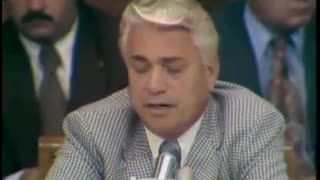 6:37:17
6:37:17
The Memory Hole
7 months agoNixon Impeachment Hearings Day 6 (1974-07-29)
1.16K -
 2:06:31
2:06:31
TimcastIRL
2 hours agoTrump To Deploy National Guard To Portland, Antifa Has Been WIPED OUT | Timcast IRL
116K62 -
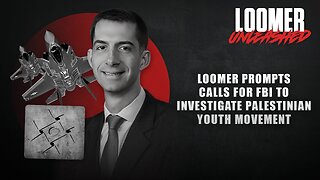 LIVE
LIVE
Laura Loomer
4 hours agoEP142: Loomer Prompts Calls For FBI To Investigate Palestinian Youth Movement
737 watching -
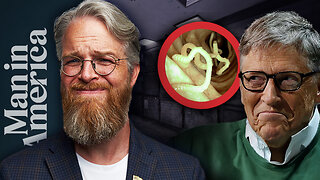 LIVE
LIVE
Man in America
6 hours agoExposing the Cover-Up That Could Collapse Big Medicine: Parasites
924 watching -
 LIVE
LIVE
CHiLi XDD
2 hours agoTekken Fight Night
84 watching -
 LIVE
LIVE
ItsLancOfficial
7 hours agoFREAKY FRIDAY-GETTING FRIED-WELP! #TOTS
25 watching -
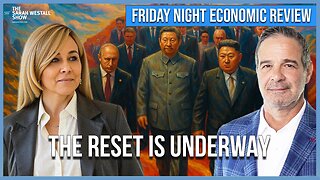 1:09:11
1:09:11
Sarah Westall
3 hours agoRead the Signs: Are We Already Operating in a New Financial System? w/ Andy Schectman
9.96K1 -
 LIVE
LIVE
Flyover Conservatives
7 hours agoRicky Schroder Exposes How Hollywood Planted Him as a Child Star | FOC Show
810 watching -
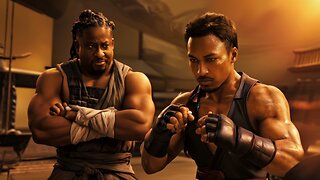 LIVE
LIVE
JahBlessCreates
1 hour ago🎉 TEKKEN TING, and maybe some music...
64 watching -
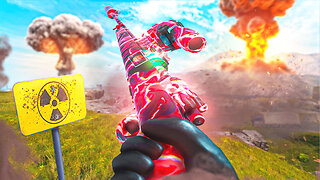 LIVE
LIVE
GritsGG
2 hours agoTop 250 Ranked Grind! Dubulars!🫡
52 watching